mmcartalk
Expert
- Messages
- 4,157
- Reactions
- 2,675
MM Retro Write-Up: Chevrolet/Geo Prizm


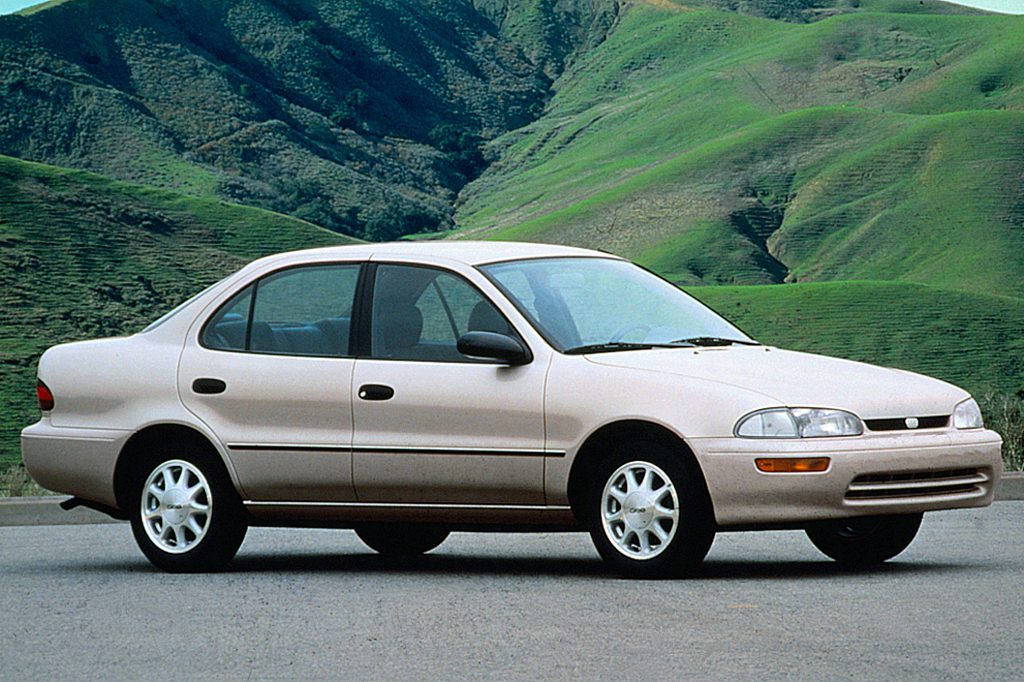
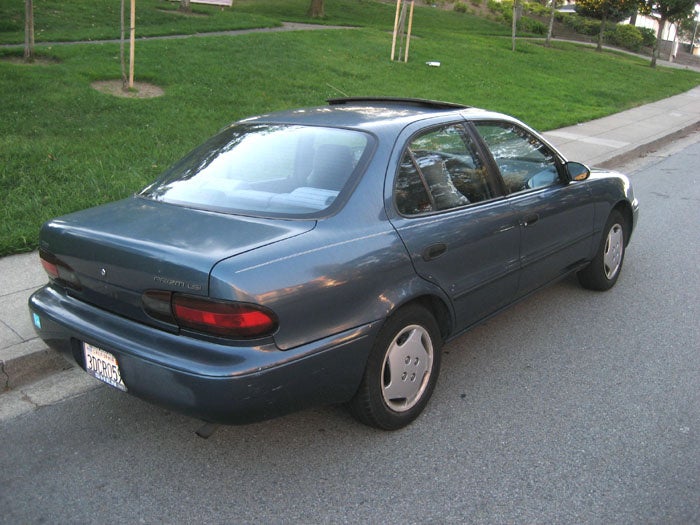
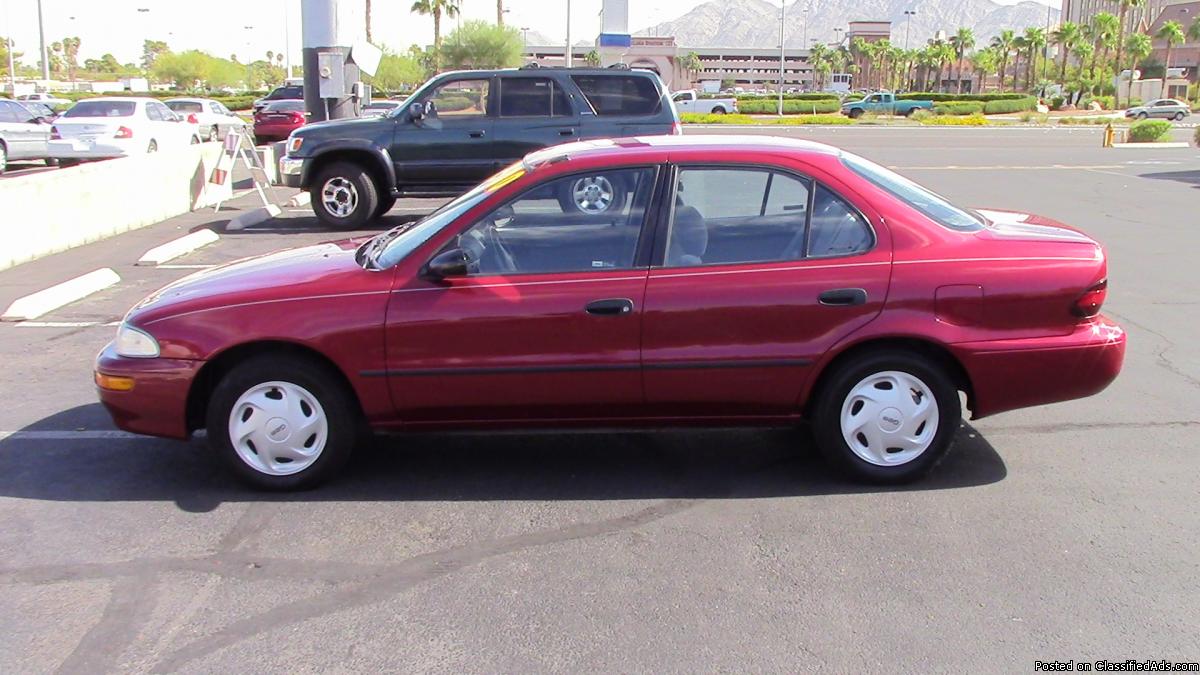
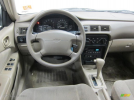

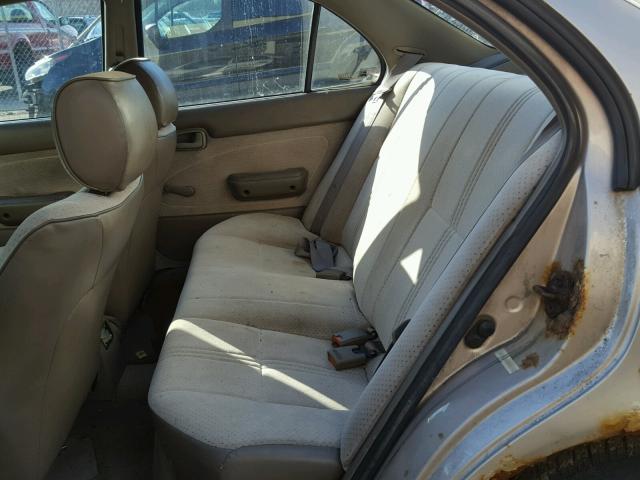
IN A NUTSHELL: A brand-new Toyota Corolla without the hassles and difficulties of dealing with Toyota salespeople.
In the 1980s, the Reagan Administration, despite Reagan’s own personal belief in the supremacy of free-markets with as few regulations as feasible, was, due to political pressure at the time, and the rapidly-growing demand in the U.S. for Japanese-sourced vehicles, more or less forced to impose “voluntary” import-quotas into the U.S. These quotas, despite consumer-demand, strictly-regulated the number of vehicles that could be imported from overseas. On paper, these quotas applied to virtually any import from any other country, but, in effect, was directly-aimed at the Japanese, because that was what most of the rapidly-growing demand was for….despite the fact that some Japanese-sourced vehicles, at that time, still had significant rust-problems in American winters (road salt) and, with their small size and somewhat stiff suspensions, were not particularly comfortable to sit in and drive. Mazdas, with their reputations of being a Poor-Man’s-BMW and “Kansai” engineering (and Hondas, to a lesser extent), were somewhat of an exception, with their more-sophisticated platforms and steering/suspensions.
But, don’t kid yourself……despite the Rust-O-Matic fenders on some Japanese vehicles back then, and their sometimes Less-Than-Ideal standards of driver/passenger comfort, that rapidly-growing demand for them was there for a reason. The domestic competition, particularly from GM and Chrysler, despite the Slick-Talking TV ads from Chrysler’s Lee Iacocca and Ford’s “Quality is Job One” theme. had been getting worse and worse for the previous decade, and was at a point that, believe me, was difficult to describe if you didn’t actually live through it and waste your money on those products, like I did. And these Japanese-built vehicles, even though their emission-choked carburetors suffered some of the same stumble-bumble and overly-lean drivability problems of the domestics (the auto industry, in general, didn’t convert to electronic fuel-injection until the mid/late 1980s) at least were screwed together properly, and didn’t break down wth clockwork regularity.
Among these Japanese imports, the Toyota Corolla was a vehicle that was in particularly high demand, having gotten an excellent reputation for its durability, non-nonsense design, and resale value…the explosive popularity of the larger Camry, introduced in the fall of 1983, was not really yet a factor, as the design was still brand new and had few takers. It must also be remembered that that was before the days of the Internet/auto-forums/social-media that we have today, and a vehicle’s reputation took longer to get established with the public.
The Corolla had made a major switch in its platform from RWD to FWD in 1984…as with the Honda Civic and Nissan Stanza, some taller AWD wagon-versions were also briefly offered. Before the switch to FWD, the smaller Corolla Tercel had gotten most of the attention of those who wanted the better winter traction of FWD, although the Tercel was quite small and light, and didn’t actually put much weight on those front wheels for traction. The Tercel remained in production (and still sold well) even after the introduction of the FWD Corolla.
But, sadly, dealerships who sold and serviced these Japanese-sourced imports knew that they had a gold mine on their hands from the supply-and-demand situation for them….actually, not much different from the one that exists today, as I write this (December 2021) because of the computer-chip shortages affecting supply. Corollas, Civics, Accords, and almost anything with the Toyota or Honda nameplate were difficult to find, bargain on and purchase without paying at least list price, and, sometimes, more than list. I remember looking at a turquoise/teal-colored Accord in the showroom (an absolutely beautiful color that is sorely-neglected by automakers today) and noting the Added-on/Second-Sticker price (I don’t remember the exact mark-up, but it was substantial). The salesperson, IMO somewhat arrogant in his attitude, said ”That’s it, no negotiation……people can either afford a new Accord or they can’t”. Sadly, he was correct….it was a clear gravy-train for the dealerships, although they of course, could have sold even more (and made more profits), if they themselves had gotten more of them. Toyota and Honda (and eventually other Japanese manufacturers) eventually got around some of those quota-restrictions by opening up their own plants in the U.S., which, of course, would also eliminate the need to transport new vehicles across the Pacific by cargo-ship.
At GM, their often-inept marketers actually came up with a potentially good idea…..in addition to the all-new Saturn Division, which would sell small domestic plastic-bodied cars in competition to the Japanese, a new Geo marque would be created, sold through Chevrolet dealerships rather than as a separate division, marketing what were essentially rebadges or related designs of existing Japanese-designed vehicles from Toyota, Isuzu, and Suzuki. One of these vehicles was the Geo Prizm, which was essentially a rebadged version of the Toyota Sprinter, the Sprinter itself being a closely-related version of the Corolla. The Chevy Nova, an earlier rebadge of the previous Sprinter, had also been offered through Chevy dealerships, but was relatively unsuccessful, despite the fact that it was more reliable than any other GM vehicle in the vehicle, and had the corporations’s lowest warranty-costs and claims. Although I’m not sure I totally agree with this, one reason auto-historians have given for the 80s-vintage-Nova’s lack of success was the country’s rapidly-growing Hispanic population and the fact that “No-va,” in Spanish, literally means “No-Go” or “Won’t-Run”. Like I said, just a theory, but an interesting one.
The Geo marque, in contrast, represented another whole approach from the earlier Nova. The Prizm would be built in the same NUMMI factory in Fremont, CA that GM shared with Toyota, where some American-spec versions of the Corolla were also produced. In other words, like with the Nova, Prizms would come off of the same assembly line as Corollas, be subject to the same levels of quality/inspections, and be built with many of the same parts and components, although the Corolla, unlike the Prizm, besides a four door sedan, also offered a five-door wagon version. The Geo logo (symbol) of a globe represented the global nature of the Marque, which most Americans, back then, did not associate with Chevrolet. Best of all, the new Prizm did not have the previous record of selling at or above MSRP by arrogant salespeople like the Corolla did, so it offered buyers potentially a much better deal-making/buying/servicing experience…and essentially getting a new Corolla for a better price, less hassle. In fairness, though, Toyota offered a longer 5/60 drivetrain warranty to Geo’s 3/36, but, in truth, there was relatively little likelihood that the drivetrain warranty would be used on either vehicle.
There were three generations of the Prizm offered before it went out of production, and I’ll concentrate on the second one, because IMO it was the best of the three, for several reasons. Like the Corolla, it came with a 5-speed manual or 4-speed automatic and a 1.8L non-turbo in-line four that was extremely easy to work on. The oil filter, for example, was high on the front side of the engine block…just pop the hood, reach down about a foot or so, and unscrew it, although your hand and arm had to avoid the adjacent hot exhaust-shield. My late mom had a 1994 Corolla Wagon (she wanted a wagon, and the Prizm didn’t offer one), and I used to do the oil changes on it for her regularly. She got a decent, though not overly-generous, deal at a local Toyota shop on one, because I was a repeat customer, having gotten an earlier Celica there and shopped there with other customers. The Prizm was quite similar to the Corolla sedan inside and out, although different paint colors were offered, and the dash/gauge/control layout had some differences. But, underneath, it was the same reliable, appliance-like vehicle the Corolla was, using the same components. It had the same non-sporting, somewhat appliance-feel to the driving characteristics/road-manners as the Corolla, the same overly-firmly-padded (for my taste) seats, and the same level of what was safety-equipment in those days. It was, in short, a Corolla sedan sold at Geo/Chevy dealerships, offering buyers a potentially better experience than at some of the Toyota/Honda stealerships.
As I said, I liked the Second-generation Prizm (1993-1997) the best….and a friend from my church, on my recommendation, bought one (green, if I remember the color correctly), and was very pleased with it….she kept it a number of years. The First-generation and Third-Generation models were both slightly smaller, didn’t seem to have quite as much room inside, and the Third-Generation model felt like it was built with lighter-weight / less-durable materials. I’ve long-felt (and still do today) that Toyota produced many of its best vehicles in the mid-late 1990s, and started going downhill after around 2000….and that, of course, was reflected in the Prizm.
Geo also marketed other rebadged or redone Japanese vehicles, such as the Sprint/Metro (Suzuki Sprint/Cultus), Geo Spectrum (Isuzu I-Mark), Tracker (Suzuki Sidekick), and Storm (Isuzu Impulse). In 1997, the Geo moniker was dropped (GM, IMO, never really gave an adequate explanation why), and these products were then sold under the Chevrolet nameplate. Later, a version of the Toyota Matrix 5-door wagon/hatchback, with the choice of FWD or AWD, was sold as the Pontiac Vibe….also built in the same NUMMI plant in Fremont.
Unfortunately, the Prizm never attained the same popularity the Corolla did, despite its similar mechanicals and less-hassle buying experience. That was, probably, as I aforementioned earlier, due to the fact that this time-period occurred before the Internet, and car-bargains and customer-experience, outside of always-popular Consumer Reports, just didn’t travel with the speed it does today.
And, as Always……Happy Vehicle-Memories.

MM







IN A NUTSHELL: A brand-new Toyota Corolla without the hassles and difficulties of dealing with Toyota salespeople.
In the 1980s, the Reagan Administration, despite Reagan’s own personal belief in the supremacy of free-markets with as few regulations as feasible, was, due to political pressure at the time, and the rapidly-growing demand in the U.S. for Japanese-sourced vehicles, more or less forced to impose “voluntary” import-quotas into the U.S. These quotas, despite consumer-demand, strictly-regulated the number of vehicles that could be imported from overseas. On paper, these quotas applied to virtually any import from any other country, but, in effect, was directly-aimed at the Japanese, because that was what most of the rapidly-growing demand was for….despite the fact that some Japanese-sourced vehicles, at that time, still had significant rust-problems in American winters (road salt) and, with their small size and somewhat stiff suspensions, were not particularly comfortable to sit in and drive. Mazdas, with their reputations of being a Poor-Man’s-BMW and “Kansai” engineering (and Hondas, to a lesser extent), were somewhat of an exception, with their more-sophisticated platforms and steering/suspensions.
But, don’t kid yourself……despite the Rust-O-Matic fenders on some Japanese vehicles back then, and their sometimes Less-Than-Ideal standards of driver/passenger comfort, that rapidly-growing demand for them was there for a reason. The domestic competition, particularly from GM and Chrysler, despite the Slick-Talking TV ads from Chrysler’s Lee Iacocca and Ford’s “Quality is Job One” theme. had been getting worse and worse for the previous decade, and was at a point that, believe me, was difficult to describe if you didn’t actually live through it and waste your money on those products, like I did. And these Japanese-built vehicles, even though their emission-choked carburetors suffered some of the same stumble-bumble and overly-lean drivability problems of the domestics (the auto industry, in general, didn’t convert to electronic fuel-injection until the mid/late 1980s) at least were screwed together properly, and didn’t break down wth clockwork regularity.
Among these Japanese imports, the Toyota Corolla was a vehicle that was in particularly high demand, having gotten an excellent reputation for its durability, non-nonsense design, and resale value…the explosive popularity of the larger Camry, introduced in the fall of 1983, was not really yet a factor, as the design was still brand new and had few takers. It must also be remembered that that was before the days of the Internet/auto-forums/social-media that we have today, and a vehicle’s reputation took longer to get established with the public.
The Corolla had made a major switch in its platform from RWD to FWD in 1984…as with the Honda Civic and Nissan Stanza, some taller AWD wagon-versions were also briefly offered. Before the switch to FWD, the smaller Corolla Tercel had gotten most of the attention of those who wanted the better winter traction of FWD, although the Tercel was quite small and light, and didn’t actually put much weight on those front wheels for traction. The Tercel remained in production (and still sold well) even after the introduction of the FWD Corolla.
But, sadly, dealerships who sold and serviced these Japanese-sourced imports knew that they had a gold mine on their hands from the supply-and-demand situation for them….actually, not much different from the one that exists today, as I write this (December 2021) because of the computer-chip shortages affecting supply. Corollas, Civics, Accords, and almost anything with the Toyota or Honda nameplate were difficult to find, bargain on and purchase without paying at least list price, and, sometimes, more than list. I remember looking at a turquoise/teal-colored Accord in the showroom (an absolutely beautiful color that is sorely-neglected by automakers today) and noting the Added-on/Second-Sticker price (I don’t remember the exact mark-up, but it was substantial). The salesperson, IMO somewhat arrogant in his attitude, said ”That’s it, no negotiation……people can either afford a new Accord or they can’t”. Sadly, he was correct….it was a clear gravy-train for the dealerships, although they of course, could have sold even more (and made more profits), if they themselves had gotten more of them. Toyota and Honda (and eventually other Japanese manufacturers) eventually got around some of those quota-restrictions by opening up their own plants in the U.S., which, of course, would also eliminate the need to transport new vehicles across the Pacific by cargo-ship.
At GM, their often-inept marketers actually came up with a potentially good idea…..in addition to the all-new Saturn Division, which would sell small domestic plastic-bodied cars in competition to the Japanese, a new Geo marque would be created, sold through Chevrolet dealerships rather than as a separate division, marketing what were essentially rebadges or related designs of existing Japanese-designed vehicles from Toyota, Isuzu, and Suzuki. One of these vehicles was the Geo Prizm, which was essentially a rebadged version of the Toyota Sprinter, the Sprinter itself being a closely-related version of the Corolla. The Chevy Nova, an earlier rebadge of the previous Sprinter, had also been offered through Chevy dealerships, but was relatively unsuccessful, despite the fact that it was more reliable than any other GM vehicle in the vehicle, and had the corporations’s lowest warranty-costs and claims. Although I’m not sure I totally agree with this, one reason auto-historians have given for the 80s-vintage-Nova’s lack of success was the country’s rapidly-growing Hispanic population and the fact that “No-va,” in Spanish, literally means “No-Go” or “Won’t-Run”. Like I said, just a theory, but an interesting one.
The Geo marque, in contrast, represented another whole approach from the earlier Nova. The Prizm would be built in the same NUMMI factory in Fremont, CA that GM shared with Toyota, where some American-spec versions of the Corolla were also produced. In other words, like with the Nova, Prizms would come off of the same assembly line as Corollas, be subject to the same levels of quality/inspections, and be built with many of the same parts and components, although the Corolla, unlike the Prizm, besides a four door sedan, also offered a five-door wagon version. The Geo logo (symbol) of a globe represented the global nature of the Marque, which most Americans, back then, did not associate with Chevrolet. Best of all, the new Prizm did not have the previous record of selling at or above MSRP by arrogant salespeople like the Corolla did, so it offered buyers potentially a much better deal-making/buying/servicing experience…and essentially getting a new Corolla for a better price, less hassle. In fairness, though, Toyota offered a longer 5/60 drivetrain warranty to Geo’s 3/36, but, in truth, there was relatively little likelihood that the drivetrain warranty would be used on either vehicle.
There were three generations of the Prizm offered before it went out of production, and I’ll concentrate on the second one, because IMO it was the best of the three, for several reasons. Like the Corolla, it came with a 5-speed manual or 4-speed automatic and a 1.8L non-turbo in-line four that was extremely easy to work on. The oil filter, for example, was high on the front side of the engine block…just pop the hood, reach down about a foot or so, and unscrew it, although your hand and arm had to avoid the adjacent hot exhaust-shield. My late mom had a 1994 Corolla Wagon (she wanted a wagon, and the Prizm didn’t offer one), and I used to do the oil changes on it for her regularly. She got a decent, though not overly-generous, deal at a local Toyota shop on one, because I was a repeat customer, having gotten an earlier Celica there and shopped there with other customers. The Prizm was quite similar to the Corolla sedan inside and out, although different paint colors were offered, and the dash/gauge/control layout had some differences. But, underneath, it was the same reliable, appliance-like vehicle the Corolla was, using the same components. It had the same non-sporting, somewhat appliance-feel to the driving characteristics/road-manners as the Corolla, the same overly-firmly-padded (for my taste) seats, and the same level of what was safety-equipment in those days. It was, in short, a Corolla sedan sold at Geo/Chevy dealerships, offering buyers a potentially better experience than at some of the Toyota/Honda stealerships.
As I said, I liked the Second-generation Prizm (1993-1997) the best….and a friend from my church, on my recommendation, bought one (green, if I remember the color correctly), and was very pleased with it….she kept it a number of years. The First-generation and Third-Generation models were both slightly smaller, didn’t seem to have quite as much room inside, and the Third-Generation model felt like it was built with lighter-weight / less-durable materials. I’ve long-felt (and still do today) that Toyota produced many of its best vehicles in the mid-late 1990s, and started going downhill after around 2000….and that, of course, was reflected in the Prizm.
Geo also marketed other rebadged or redone Japanese vehicles, such as the Sprint/Metro (Suzuki Sprint/Cultus), Geo Spectrum (Isuzu I-Mark), Tracker (Suzuki Sidekick), and Storm (Isuzu Impulse). In 1997, the Geo moniker was dropped (GM, IMO, never really gave an adequate explanation why), and these products were then sold under the Chevrolet nameplate. Later, a version of the Toyota Matrix 5-door wagon/hatchback, with the choice of FWD or AWD, was sold as the Pontiac Vibe….also built in the same NUMMI plant in Fremont.
Unfortunately, the Prizm never attained the same popularity the Corolla did, despite its similar mechanicals and less-hassle buying experience. That was, probably, as I aforementioned earlier, due to the fact that this time-period occurred before the Internet, and car-bargains and customer-experience, outside of always-popular Consumer Reports, just didn’t travel with the speed it does today.
And, as Always……Happy Vehicle-Memories.

MM
Last edited:
